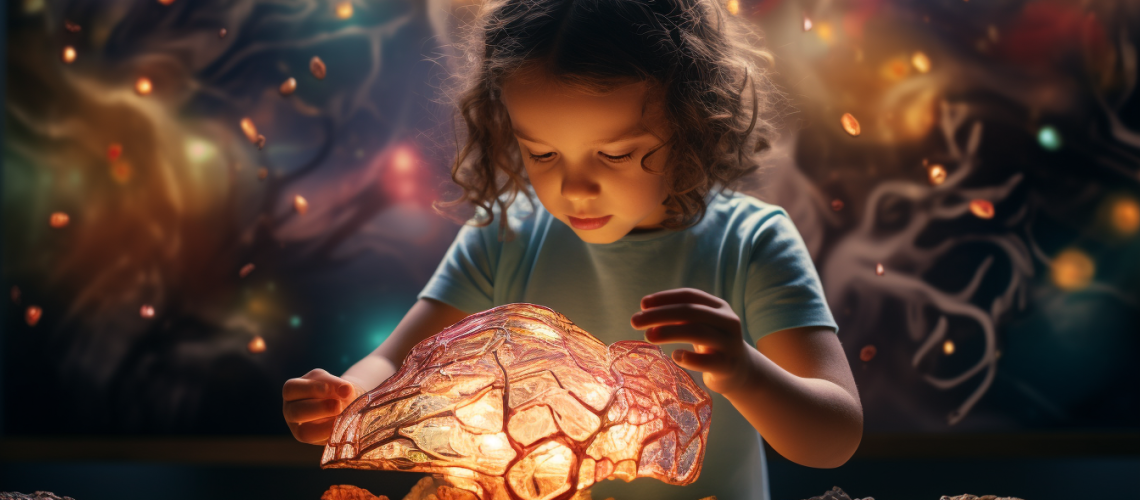The study of the human brain has fascinated civilizations throughout history. With advancements in technology, we can now observe the formation of brain receptors and understand the stimuli that have the greatest impact on the human brain. In this article, we will explore the crucial role of early experiences and play in brain stimulation, cognitive development, and fostering creativity in children from birth to around the age of five.
Building Receptors through Early Experiences:
Brain scans of children have revealed that when receptors fail to form, they eventually die off, rendering rewiring impossible. This highlights the significance of early experiences and play in shaping the brain. As early as one year of age, it is important to provide children with the opportunity to physically move, explore, and manipulate objects. Under direct supervision, children can engage with eco-friendly clay, fabric, and age-appropriate toys. While some parents may strive for perfection and expect puzzle pieces to fit perfectly, it is essential to embrace exploration. Through exploration, children learn that certain patterns lead to success, while others may result in failure, such as a puzzle piece not fitting correctly. Failure plays a vital role in brain development and contributes to the formation of receptors responsible for higher-level thinking abilities in young children.
The Connection between Exploration and Creativity:
Exploration is closely linked to creativity and the further development of ideas. For instance, if a parent asks a child to color a bunny and the child chooses a purple crayon, the parent should not immediately dismiss the choice by claiming that bunnies can only be pink or white. Instead, they should inquire about the child’s reasoning behind the color selection. By showing real bunny pictures and discussing the colors observed in the real world, parents can encourage their child’s creativity. It’s important to note that young children often use darker colors in their artwork not only as a manifestation of their creativity but also because darker colors are easier to see.
Fine Motor Skills and Color Choices:
The limited dexterity in children’s fingers may pose challenges when using lighter tones, such as painting an entire bunny in pink. The physical strength required for such tasks might be overwhelming for young children. In such cases, they may turn to purple as a means of exploring their creativity or to manage a task that is otherwise too difficult due to limited fine motor skills. By asking questions and delving into the color choice, children can develop a deeper understanding of their own thinking processes.
Experiences as Catalysts for Creativity:
Exposing children to experiences that foster creativity is crucial both before and after birth. Introducing classical music to your child’s environment before birth and engaging them in hands-on art activities throughout their early years and into middle school can have a profound impact. It’s important for parents to recognize that art-based activities, such as drawing, molding, constructing, painting, playing instruments, and dancing, not only nurture creativity and improve brain function but also serve as stress relief and guided meditation exercises for children and adults alike. Engaging in creative endeavors not only stimulates the brain but also encourages relaxation and exploration.
Conclusion:
Early childcare plays a significant role in shaping the developing brain, fostering cognitive growth, and nurturing creativity in children. By embracing exploration, encouraging creative choices, and providing diverse experiences, parents can support their child’s cognitive and creative development. Understanding the importance of early experiences and play will empower parents to create an environment that promotes brain stimulation and lays a foundation for lifelong learning and creative thinking.



